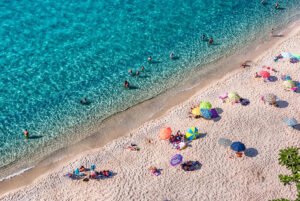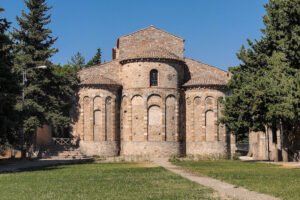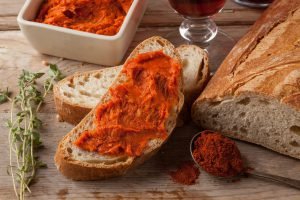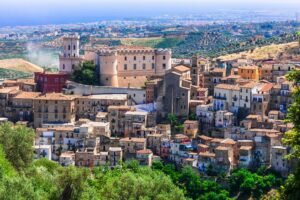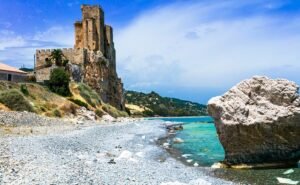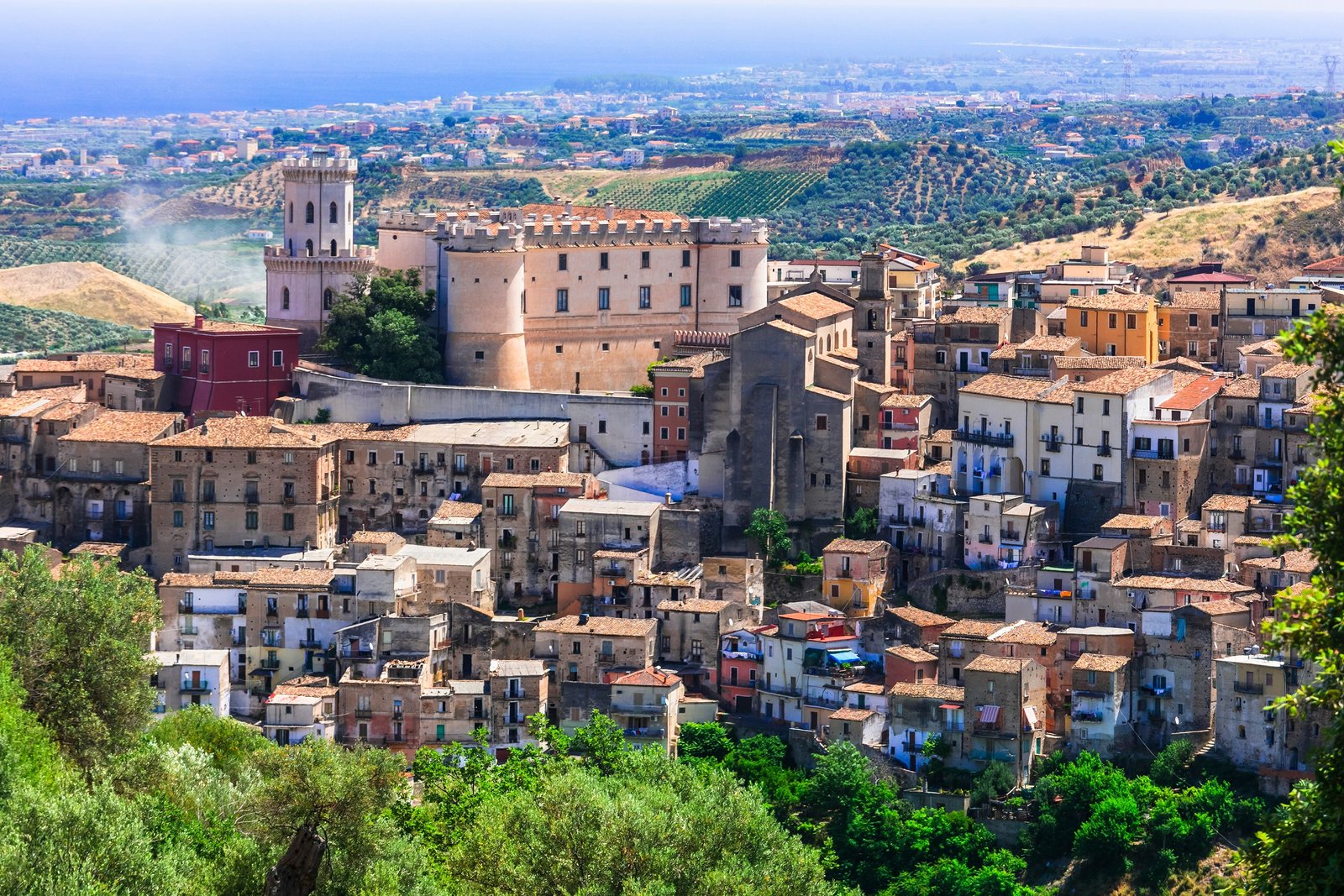Belonging to the ancient and glorious Magna Graecia, Calabria, a region rich in history and ancient values belonging to the peoples who passed through it, is a destination that reserves discoveries and surprises. Here, the mountains overlook the sea and in a short time you can go from the Tyrrhenian to the Ionian Sea crossing hinterland and seascapes immersed in the intense colours of a still unknown place. Calabria is the land of myth that lives on in the idiom, the food, the traditions, but above all in the feeling of filoxenia, the love of the stranger as understood by the Greeks. It is not surprising if you receive an invitation to lunch from the locals. And if you meet any of the locals on the street, they are very likely to guide you to unusual places by telling you stories you have never heard.

"I felt a great sorrow at having to leave Calabria. Its beauty had exerted a kind of magical ascendancy over me and I felt it would be eternal. I had the feeling that whatever I saw in the future would not arouse equally pleasant and indelible feelings in me. Of this I have no doubt."
(Richard Keppel Craven)
Calabria, framed between Basilicata and the Ionian and Tyrrhenian Seas, occupies the southernmost tip of our peninsula. A region with an ever-changing territorial landscape, it is a constant encounter between East and West: Byzantine and Norman echoes still resound in its dialects, traditions and culture. Its conformation is predominantly hilly and mountainous: the Pollino National Park, home to the highest massif in the region, is a surprising nature reserve; Aspromonte, on the other hand, located to the south and incorporated in the Calabrian Apennines, is tinged with white in winter and is populated by skiers and sports enthusiasts; the Paolana Coastal Chain, stretching from the Scalone Pass to the Savuto Valley, alternates between high altitudes and gentle slopes. From the mountains you can always catch a glimpse of the sea, along jagged and sandy coastlines rise towers and castles, ancient walls of Magna Graecia cities that preserve mosaics and archaeological finds dating back to the dawn of civilisation, all the way to Reggio Calabria, where the seafront was named by D'Annunzio as 'the most beautiful kilometre in Italy'. In Calabria, we cross fields of centuries-old olive trees and vast expanses of citrus groves, among which the fragrant bergamot stands out: we are on the Riviera dei Cedri, in the enchanting coastal strip of the Alto Tirreno Cosentino, where, amidst fairytale beaches and wild landscapes, the citrus fruit symbol of the Mediterranean grows. Finally, sudden horizons extend over the sea of the Costa degli Dei and Capo Vaticano as far as the Costa Viola known as the 'Little Paradise', offering breathtaking views.
Dreams still dwell in the alleys and ancient walls of villages and old towns, but also in the busy streets of cities where the past and the future are the custodians of beauty. Here, the archaic and the contemporary can suddenly meet, in the mythical fig-flavoured ice cream, in the reassuring everyday life of the village of San Fili or in the centre of Cosenza where the Bilotti Open-air Museum, MAB, places works by the great Picasso, Dalì, Rotella or Consagra and Manzù in Corso Mazzini. In Sila, emotions are weaved with the art of spinning: San Giovanni in Fiore is known for its carpets and Longobucco, in the province of Cosenza, is one of the few places where fabrics with colours and designs reminiscent of oriental art are still woven on ancient hand looms. According to tradition, this is possible because in ancient times Turkish pirates kidnapped some local women who, after a long period of time, managed to return to their homeland and spread the art of decoration on canvas. The Calabrian landscape can be experienced in a thousand ways: in slow walks among ancient villages, dips in a deep-bottomed crystal-clear sea, and also in more dynamic experiences, for those who prefer a more active and adrenalin-pumping stay. In the heart of the Pollino, for example, lovers of rafting and canoeing can enjoy these activities in a unique and evocative setting. In Pizzo, Bagnara and other centres, on the other hand, it is possible to experience the thrill of paragliding, hugging the coast and hinterland with your gaze. Visitors to Calabria cannot help but go back in time amidst art and culture. In Reggio Calabria, the National Museum of Magna Graecia houses exhibits ranging from prehistoric times to the Byzantine era, passing through Classical Greece with its Riace bronzes, masterpieces of extraordinary importance for their beauty and historical value. Far from mass tourism, on the other hand, Rossano 'the Byzantine', a village in the province of Cosenza, guards the codex purpureus, a manuscript resulting from Byzantine book production and art that has been recognised as a Unesco World Heritage Site, in the 'Memory of the World' category. And those who see Rossano simply cannot miss an immersion in the world of Amarelli liquorice, the world's best liquorice factory since 1731. In Calabria, enchanted beauty alternates with the harshness of the landscape. In Pentedattilo, you can see the village leaning against a high rock in the shape of a gigantic cyclopean hand, Gerace will let you in on many of its 100 churches, while the Archaeological Park of ancient Kaulon in Monasterace, with the remains of the Doric temple by the sea, will leave you speechless.
Cradle of the Mediterranean Diet, Calabria's is a convivial table, with strong and intense flavours. Chilli peppers reign supreme: cultivated in pots next to basil, they set the spirits high and enhance 'nduja, the spreadable sausage produced in Spilinga, as well as morzello, from the Spanish 'el muerzo' (the bite), a very spicy dish made from veal entrails, typical of the Catanzaro area, suitable for courageous palates! Meatballs in sauce, 'i purpetti', are an authentic institution in Cosenza, known since the 15th century and born as a throwback dish, for the Calabrians they mean many things: home, party, Sunday; to be eaten on out-of-town trips, the memory of knowledgeable mothers and grandmothers. In the hinterland, pesce stocco, a recipe based on salt cod, onions and tomatoes, is a dish that can also be accompanied by a good local red wine. Surprising is the survival to this day of strangugliaprieviti or strozzapreti (handmade gnocchi) and lagane, a kind of wide noodle to be eaten with chickpeas. Remaining in the groove of traditional cuisine, one cannot do without the unmistakable flavour of Mormanno lentils and the poor man's white bean, true ambassadors of the agricultural and food culture of the Pollino. Also in Mormanno (CS) lives the tradition of bocconotto, a soft short pastry cake filled with mostarda or cherry jam. The citron in Calabria also has a history that must be discovered. Cultivated for centuries in these lands, it is considered a sacred fruit by the Jewish people: for this reason, rabbis from all over the world come to Santa Maria del Cedro every summer and, together with the farmers, select the best citrons for the feast of the huts. The harvest is a festive occasion that attracts many visitors. Reggio Calabria is the home of nougat, that of Bagnara has been a tradition since 1690 when a Spanish noblewoman arrived in Bagnara bringing the recipe. What makes this torrone special is the use of orange blossom honey, the fragrant citrus flower that abounds on the Costa Viola, local almonds, cocoa and cinnamon. The Calabrian table keeps the roots of this land alive, and one could say that between the Pollino, Sila and the Strait the connection between the needs of nutrition and those of the spirit is felt more than anywhere else.
Events in Calabria are intertwined with street food, folk dances and festivals of fire and saints where food is inspiration and allegory. During the summer, the Peperoncino Jazz Festival brings Italian and international artists to small villages and unusual locations. The Primavera dei Teatri (Spring of Theatres) event, on the other hand, stages the new languages of the contemporary scene by bringing them to the symbolic places of the city of Castrovillari. This centre is also famous for its carnival, where participants compete to create the most spectacular performance in a allegorical parade of masks and colours. In Italo-Albanian Calabria, on the occasion of Easter rites, the Vallje take place to commemorate the deeds of the epic hero Giorgio Castriota Skanderbeg: ethno-choreographed dances, in traditional costume, wind their way through the streets of the village with songs of love and nostalgia for the motherland. In Civita, in the province of Cosenza, one of the most popular and spectacular Vallje takes place every Tuesday after Easter. In the most archaic Calabria, Easter re-enacts the passion of Christ with real theatrical performances along the streets of the town, such as that of the Vattienti (the flagellants). This is a religious ceremony dating back to 1618 in which the flagellants beat themselves until they bleed in a sort of catharsis and atonement for sins that recalls the passion of Christ. The Giants of Monte Poro, in Vibo Valentia, amuse and frighten young and old alike. In Roccella Jonica, in the beautiful setting of the Costa dei Gelsomini, one of the historic jazz festivals founded in 1981 brings together the beauty of the place, recognised in history as an important feud and defensive stronghold, and the greatest jazz musicians on the international scene. For wave lovers, a stop at Gizzeria, on the Tyrrhenian coast in the Lametino area, the kitesurfing capital that hosts the annual kitesurfing world championship, is recommended. To experience new artistic languages immersed in local history, on the other hand, it is possible to attend the Armonie Festival, inside the Archaeological Park of Roccelletta di Borgia, a place immersed in the myth from which Ulysses departed towards Ithaca, today a triumph of music, art and theatre in a complex and complete idea of beauty.
